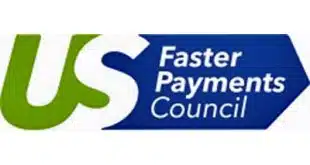The payment industry's Wall Street parade continued Monday when non-bank ATM network owner Cardtronics Inc. announced plans for an initial public offering of common stock. The Houston-based operator of 31,000 machines hopes to raise potentially $300 million, before underwriting fees and payments to current owners, to pay down debt and fund other ventures, according to a registration statement the company filed Friday with the Securities and Exchange Commission. Cardtronics' IPO is the latest in a string of big financial dealings this year in which some publicly traded payment-industry players such as First Data Corp. and Alliance Data Systems Corp. are going private in leveraged buyouts while others such as Metavante Corp. are being spun off from their parent companies. Still others, most notably Fiserv Inc., which plans to buy bill-payment specialist CheckFree Corp., are getting bigger through acquisitions. Cardtronics chief financial officer Chris Brewster, who must remain silent on most matters related to the deal as a result of an SEC-mandated quiet period, points to how the filing says the company will use the proceeds when asked why the company is doing the IPO. The document says Cardtronics plans to repay all of the $103.6 million it had borrowed on a pro-forma basis as of June 30 through a $175 million revolving line of credit. The company also has $60 million available for more borrowing. The weighted average interest rate on those borrowings is 8.2%. Cardtronics will use the remaining proceeds for working capital and general corporate purposes, including possible acquisitions. The filing says expansions of Cardtronics' fleet in the United Kingdom and Mexico have negatively affected operating earnings because transactions on the new machines haven't yet reached levels seen in more mature deployments. Costs to upgrade ATMs to the Triple-DES security standard required by the electronic funds transfer networks, develop an in-house processing system, and enhance sales and marketing efforts also have taken a toll on operating earnings. Some 18,850 of Cardtronics' ATMs are company-owned; another 12,125 are merchant-owned. Cardtronics deploys most of its ATMs in high-traffic stores of national retailers such as 7-Eleven Inc. (from which Cardtronics bought a fleet of 3,500 ATMs and 2,000 advanced-function Vcom financial kiosks in July), BP, Costco, CVS, and more. In fact, Cardtronics is heavily dependent on a just handful of customers. 7-Eleven alone accounted for 34.4% of total pro-forma revenues for the six months ended June 30. In all, machines at Cardtronics' top five merchants generated 46.3% of pro-forma ATM revenues in that period. The filing contains a mixed bag of financial data. Revenues are generated mostly by ATM surcharges or fees-in-lieu of surcharges, such as those paid by banks with which Cardtronics has cobranding agreements. In addition, EFT network interchange brings in 27% of pro-forma operating revenues. ATM operating revenues per withdrawal averaged $2.27 for the six months ended June 30 compared with $2.22 for the year-earlier period, though gross profit fell a penny to 54 cents. Revenues for 2007's first six months totaled $151.8 million, up 6.6% from $142.4 million a year earlier. But the company noted that it has lost money in three out of the past five years and has an accumulated deficit of $12.2 million. For the six months ended June 30, Cardtronics lost $9 million compared with a loss of $2.36 million in the year-earlier period. Once public, Cardtronics plans to trade its stock on the NASDAQ stock market under the ticker symbol CATM. The $300 million proceeds figure is not final, Brewster says, and some of the proceeds will go to individuals who are selling stock along with the company. The date of the IPO, which hasn't been set, will depend on how long it takes the SEC to review Cardtronics' documents, and “general market conditions,” Brewster says. Cardtronics' underwriters are Deutsche Bank Securities Inc., William Blair & Co., and Banc of America Securities LLC.
Check Also
Guidelines Emerge for Adding Send Capabilities for Instant Payments
The U.S Faster Payments Council has released fresh guidelines to help financial institutions add send …





